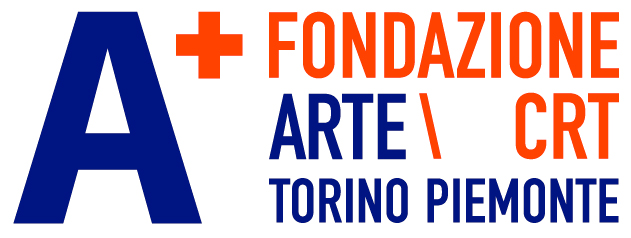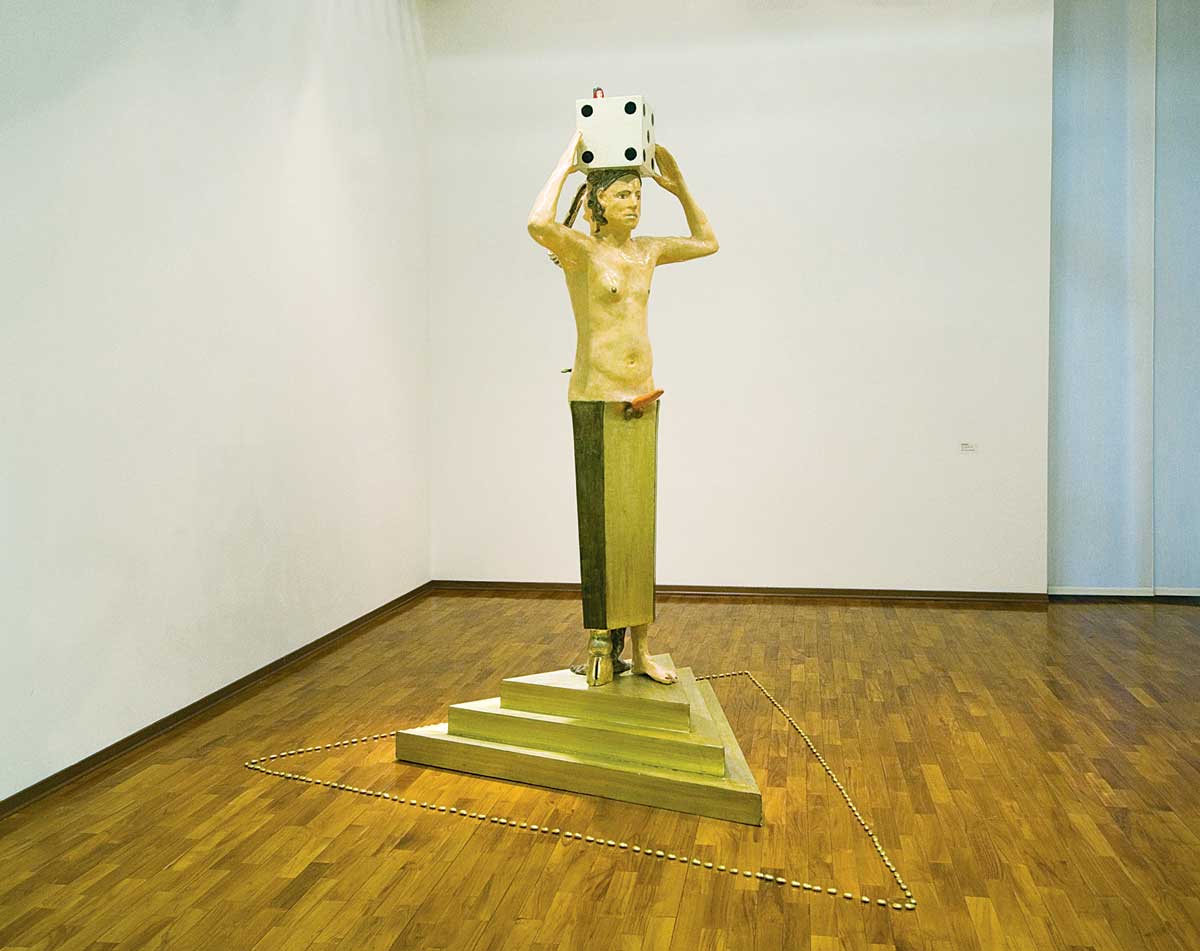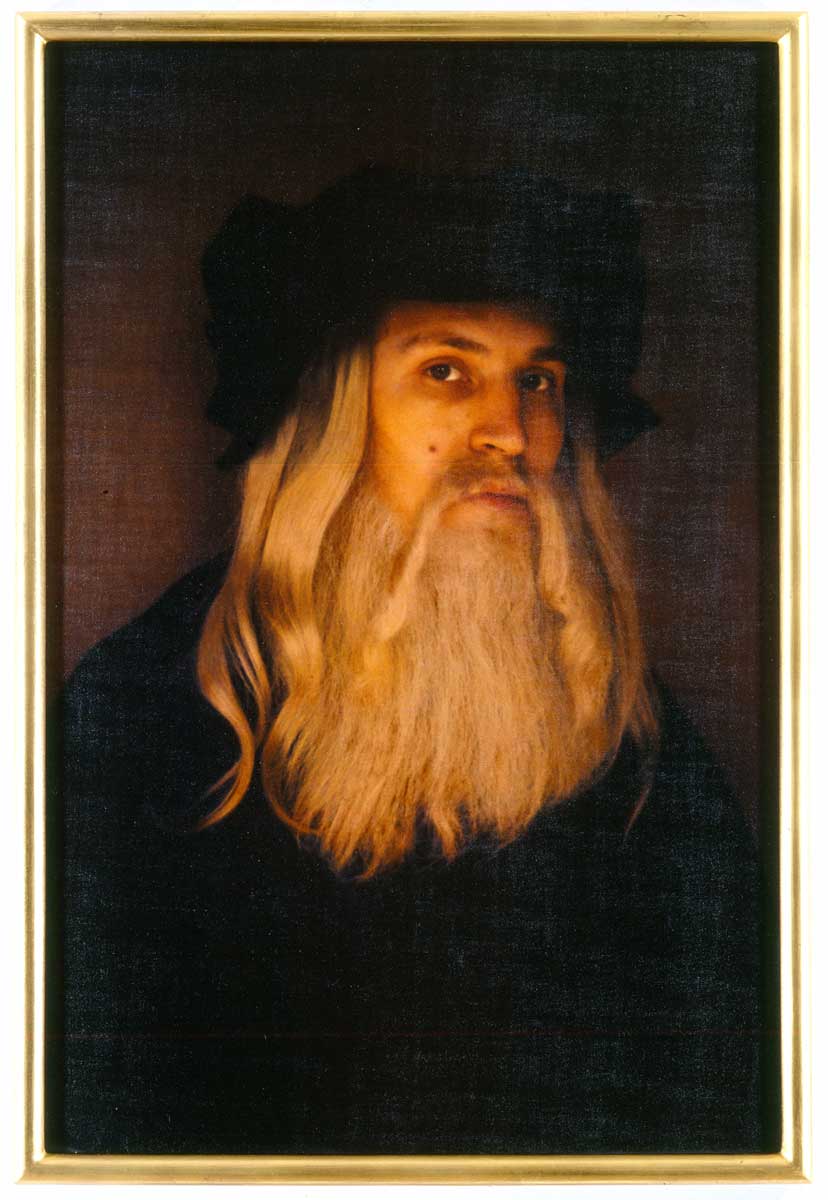Anticipating themes related to identity and gender that will have broad international dissemination in subsequent years, Luigi Ontani, since the early 1960s, has used his own body as the material through which he investigates multiple similarities and experiments with continuous disguises. In a complete union of art and life he describes himself as an “androgyne, ephebe, hermaphrodite, hybrid, Sagittarius.” Also anticipating the diffusion of the postmodern taste for citation, the catalogue from which Ontani initially draws is both the rich repertory of art history and its reiterations of Madonnas, martyrs, and heroes, and the world of literature, including his habitual reading of Italo Calvino. [...]





